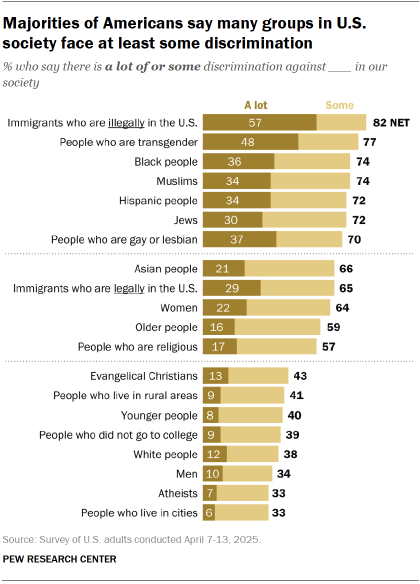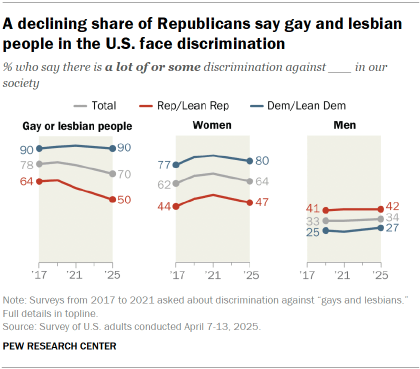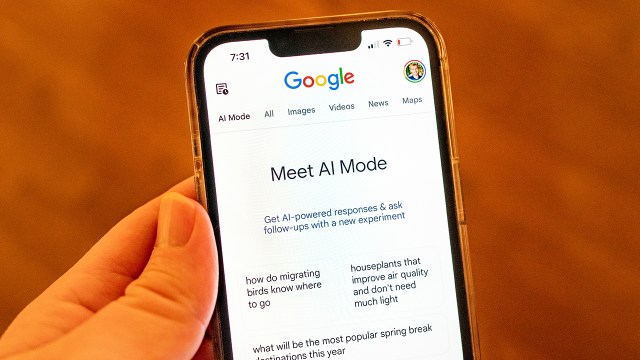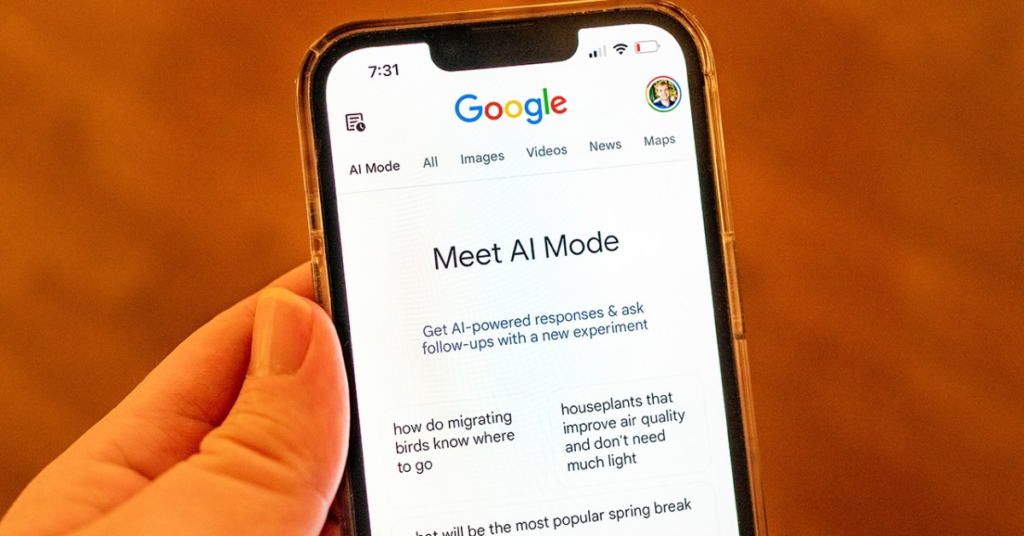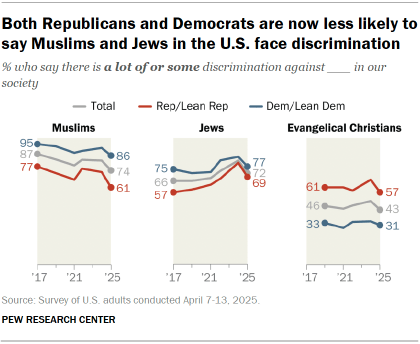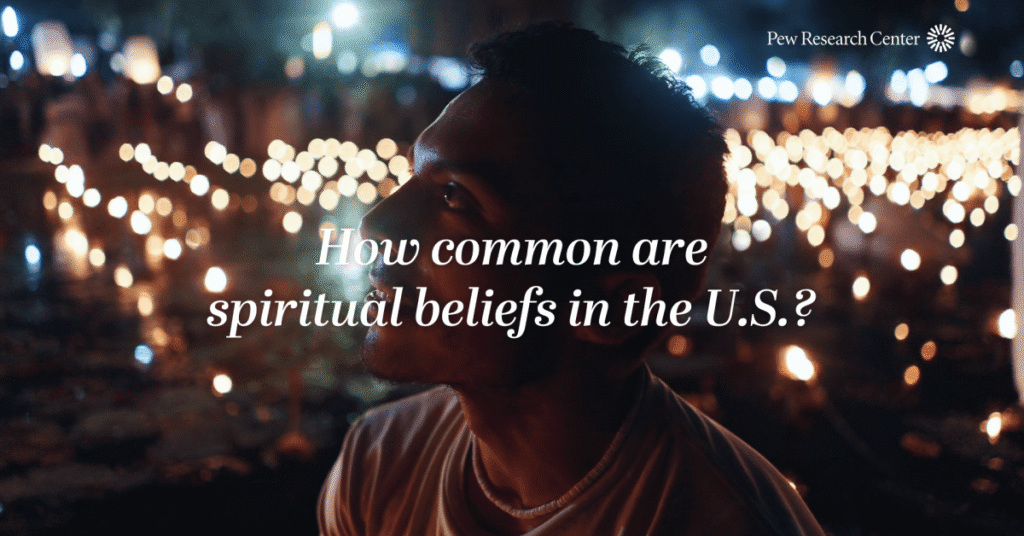How Much Discrimination Do Americans Say Groups Face in the U.S.?
How we did this Pew Research Center conducted this study to understand how Americans view discrimination against various racial, ethnic, gender, religious and other groups in the U.S. Note: Some groups are too small demographically to yield sufficient sample in this survey to report their views of discrimination against people like them, such as Jews, Muslims and people who are gay, lesbian or transgender. For this analysis, we surveyed 3,589 adults from April 7 to April 13, 2025. Everyone who took part in this survey is a member of the Center’s American Trends Panel (ATP), a group of people recruited through national, random sampling of residential addresses who have agreed to take surveys regularly. This kind of recruitment gives nearly all U.S. adults a chance of selection. Interviews were conducted either online or by telephone with a live interviewer. The survey is weighted to be representative of the U.S. adult population by gender, race, ethnicity, partisan affiliation, education and other factors. Read more about the ATP’s methodology. Here are the questions used for this report, the topline and the survey methodology. Large majorities of Americans say numerous groups in the United States face at least some discrimination, including immigrants, transgender people and members of different racial and religious groups. About eight-in-ten (82%) say immigrants who are in the U.S. illegally experience a lot of or some discrimination – including 57% who say they face a lot of discrimination, according to a new Pew Research Center survey of U.S. adults. That is the highest share for any group among 20 included in the survey. Still, there is a widespread belief that many other societal groups also are discriminated against: 77% say people who are transgender face at least some discrimination, with 48% saying this group experiences a lot of discrimination. 74% say Muslims in the U.S. face a lot of or some discrimination, while a similar share (72%) say Jews face at least some discrimination. Roughly a third say there is a lot of discrimination against those in each of these groups. Nearly three-quarters of Americans say Black people (74%) and Hispanic people (72%) face at least some discrimination. About two-thirds (66%) say Asian people face a lot of or some discrimination. While there is a widespread perception that immigrants who are in the U.S. illegally face discrimination, 65% say immigrants who are legally in this country also face a lot of or some bias. 70% say people who are gay or lesbian encounter at least some discrimination. There is also variation in perceptions of discrimination across other demographic categories: Women and men. Nearly two-thirds of adults (64%) say women face at least some discrimination, with far fewer (34%) saying the same about men. Religious groups. A 57% majority of adults say people who are religious are subject to a lot of or some discrimination; just a third say atheists in the U.S. face at least some bias. When asked about specific religious groups, far fewer Americans (43%) say evangelical Christians face a lot of or some discrimination than say this about either Muslims (74%) or Jews (72%). Age groups. A much larger share of the public says older people (59%) than younger people (40%) face at least some discrimination in the U.S. Where people live. Fewer than half of Americans say that people living in rural areas or city dwellers face a lot of or some discrimination. But a larger share say rural residents are subject to at least some discrimination (41%) than say this about people living in cities (33%). These are among the key findings of a national Pew Research Center survey of 3,589 U.S. adults conducted April 7-13, 2025. The survey also finds that perceptions of discrimination against racial and ethnic groups – Black people, Hispanic people, Asian people and White people – have declined over the past year. These changes have been largely driven by Republicans and Republican-leaning independents. There have been virtually no changes in the views of Democrats and Democratic leaners over this period. Republicans and Democrats continue to have very different views of how much discrimination many groups face in the U.S. While there have been some shifts since last year, the partisan patterns are consistent. Democrats are more likely than Republicans to say most of the groups asked about face at least some discrimination. But there are exceptions among certain groups. Groups that Republicans are more likely than Democrats to say experience a lot of or some discrimination: White people (55% of Republicans vs. 21% of Democrats) Evangelical Christians (57% vs. 31%) Men (42% vs. 27%) People who are religious (63% vs. 51%) Democrats are more likely than Republicans to say that 15 of 20 groups included in the survey face a lot of or some discrimination. These are the widest differences: People who are gay or lesbian (90% of Democrats vs. 50% of Republicans) Black people (94% vs. 54%) Immigrants who are in the U.S. legally (84% vs. 45%) Hispanic people (90% vs. 54%) Women (80% vs. 47%) Partisan differences extend to how much discrimination various groups face. For instance, while majorities in both partisan coalitions (94% of Democrats, 69% of Republicans) say that people who are in the U.S. illegally face at least some discrimination, Democrats are about twice as likely as Republicans to say they face a lot of discrimination (75% vs. 37%). Similarly, majorities of Republicans and Democrats say transgender people and Muslims in the U.S. face at least some discrimination. But in both cases, far larger shares of Democrats than Republicans say they face a lot of discrimination. For some groups, however, there is little to no partisan gap in these perceptions. Sizable majorities in both parties (77% of Democrats, 69% of Republicans) say Jews in the U.S. face at least some bias, including about three-in-ten in each party who say Jews face a lot of discrimination. And Democrats (44%) and Republicans (39%) are about equally likely to say people in rural areas face discrimination. Declining
How Much Discrimination Do Americans Say Groups Face in the U.S.? Read More »
